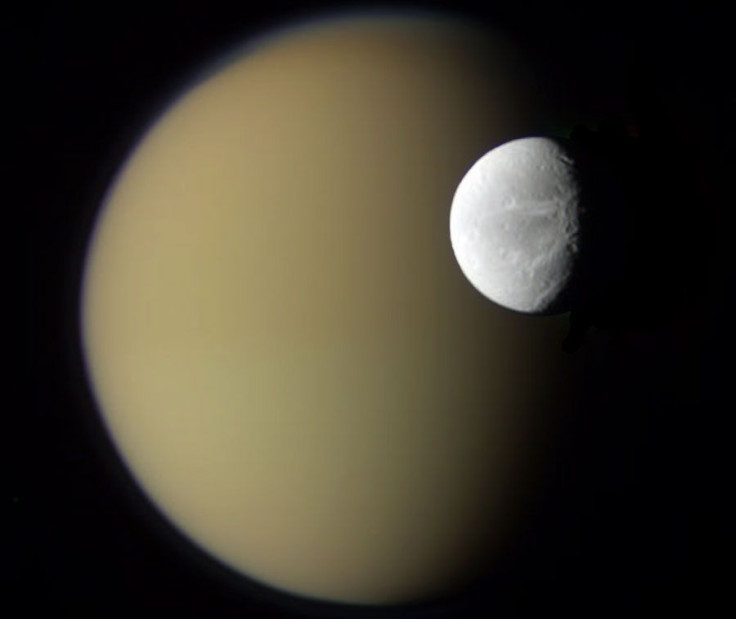Mystery Behind Bright Patches On Saturn’s Moon Titan Solved: Here's What Scientists Found

KEY POINTS
- Scientists explained the nature of the bright patches on the surface of Saturn's moon Titan
- The bright features on the moon could be dried lakebeds with organic residue
- Scientists believe their findings can help missions that are looking for alien life on Titan
Scientists were able to find out the nature of the bright spots on the surface of Saturn’s largest moon, Titan. They believe their findings could assist in future missions that are focused on finding signs of alien life on the natural satellite.
For years, scientists have wondered about what the bright patches on Titan actually were. They came across images of these strange features through the observations of the Arecibo Observatory in Puerto Rico and the Green Bank Observatory in West Virginia from 2000 to 20008.
Initially, the patches were believed to be lakes or oceans on Titan. This assumption was based on the data gathered by NASA’s Cassini spacecraft, which arrived in Saturn’s orbit in 2004.
Through observations made during the mission, NASA learned that Titan has bodies of water and an active weather system. Unfortunately, the lakes and seas spotted by Cassini were located near the moon’s poles and nowhere near the locations of the bright patches observed by the Earth-based observatories.
In an attempt to solve the mystery surrounding Titan’s bright features, scientists pooled in data collected by various facilities on Saturn’s natural satellite. This includes the information and images gathered by Cassini and the Arecibo and Green Bank observatories.
After going through their sources, the scientists concluded that the bright patches are lakebeds on Titan that have already dried up. As the liquid water disappeared, it left behind dissolved organic matter that left distinct marks on the landscape, the scientists told Space.com.
This natural phenomenon is similar to what happens to the ground after a salty body of water dries up and disappears. As the water evaporates, it leaves behind a flat surface that’s saltier than its surroundings.
According to the scientists, their findings could serve as a guide for future missions looking to explore Titan. Analyzing the organic material left behind in the dry lakebeds could reveal signs of alien life on the natural satellite.
They believe that follow-up studies based on the data collected by other observatories and facilities could provide more detailed information regarding the nature of the dry lakebeds.
© Copyright IBTimes 2025. All rights reserved.





















